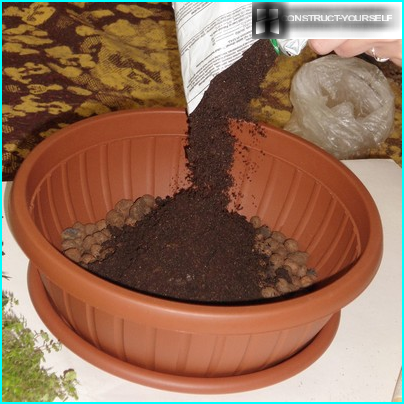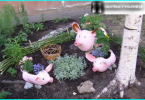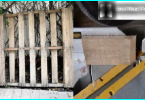
Many gardeners and growers are setting up on their plots greenhouses. This expands their possibilities of growing a healthy, environmentally safe products. Fruits and vegetables you can get year round. The main thing is to develop the project, choose good materials, build to order or buy high-quality finished design. What types of greenhouses are there? For what purposes are suited to different projects? We offer a comparison of different greenhouse designs: the pros and cons, features of installation, operation.
The contents
Particularly noteworthy are polycarbonate greenhouses are becoming more popular and in demand. The rejection of the use of glass and film in favor of the polycarbonate allowed us to improve the design and to develop new projects. They make greenhouses more efficient and maintenance more convenient. This was made possible thanks to the unique properties of the new material – lightness, strength, flexibility and good thermal insulation.
Offer you to pay special attention to the greenhouse Kremlin from the manufacturer — it showed itself very well in our climate.
Compared to glass, polycarbonate is much lighter and stronger, easier to install. It is possible to create stationary and mobile greenhouses of all shapes.
One of the most popular designs in the greenhouse in the form of a house. This view was popular for many years, until they gradually began to displace the more economical arched greenhouses. The disadvantage of the design can be considered as a large consumption of materials for construction, and the advantages should include a large internal volume and ease of plant care
Types and construction of greenhouses
Distinguish freestanding greenhouses and attached buildings. If the first type is obvious, while the second implies that one of the walls of a residential building or auxiliary buildings used as supporting structure for the greenhouse. Typically, these greenhouses do heated and used in winter.
In addition to the usual designs, gaining popularity unpredictable economical and efficient greenhouses attached to the homes. Very interesting idea of arranging the winter vegetariya. There are several options. One of the most popular vegetari Ivanov. It’s a greenhouse made of polycarbonate, built on an incline, in which the wall of the house is used not only as construction material but also as a screen-reflector for solar rays.
Sloping roof solar vegetariya Ivanova is designed so that the sun’s rays falling on the surface at a right angle and almost not reflected. Due to this, plants get 4 times more heat and light. All the energy goes towards lighting and heating greenhouses
Vegetaria has called greenhouses of the new generation. This design of the invention, an ordinary school teacher of physics, but it is better than many other suits for our climatic conditions. Looks like from the inside and outside solar vegetari Ivanova, you can see in the video. The owner talks about the peculiarities of growing plants in a greenhouse:
Particularly noteworthy are the designs of freestanding greenhouses. Some of these projects can be implemented for the buildings adjacent to the house. Importantly, to accurately determine your needs and figure out how to position a greenhouse, correctly calculate the area. The most popular designs:
- with vertical walls (also called greenhouses-«houses» because of his resemblance to residential buildings);
- in the form of a pointed arch (also called arched greenhouses);
- with sloping walls (less common than the construction of the first two types);
- with a mansard roof (greenhouses built in the form of the so-called Dutch hay barn).
There are winter and spring greenhouses. Despite «speaking» the name «spring» refers to greenhouses, which are used from March to November. Winter necessarily require heating. Depending on the mobility distinguish between stationary and mobile designs. The plants are placed on racks and bestellen ways. And for their cultivation used soil and soilless (Aero-hydroponic) methods.
The photo shows the shape of the frame vegetariya winter Chinese improved design, adapted for use in our latitudes. The task of the Builder is to minimize the resource consumption for heating buildings without damage to the plants. The wide face vegetariya oriented to the South. Unlike other buildings of this type, this designed without regard to laying of pipes in the ground. Heating will be provided by compact wood burning boiler
Winter greenhouses operate year-round. They are perfect for growing vegetables for personal and commercial purposes. The heating issue can be solved in different ways: install boilers, furnaces, radiators. Each owner chooses the most affordable and suitable option for yourself. Winter greenhouses can be freestanding and adjacent to other buildings
Option #1 – «house» with vertical walls
Of all types of greenhouses «house» — still the most common design, despite the emergence of new, more practical modifications. The reason for this popularity is the convenience and versatility of the design. It is a skeleton of a house, over which is a gable roof. Walls built to a height of approximately 1.5 m from the ground, the roof ridge a on the height 1.8-2.4 m. Thanks to this device the greenhouse owner does not have to bend the head, caring for the plants, and place landing on shelves, racks: space enough.
The frame of the greenhouse-«house» either glazed or closed with cellular polycarbonate. You can tighten the film. Gable roof – a significant advantage, because the snow does not stay on the inclined surfaces and slide down. This creates increased load on the upper part of the structure. The advantages of greenhouses are not always offset the disadvantages of high cost, complexity of construction and the substantial heat losses that occur through the North wall. It is recommended to additionally insulate the panels, but it also increases the cost of the arrangement.
Option of greenhouses with vertical walls is very beneficial to those owners who can assemble a construction with your own hands. One of the most popular ways to reduce the cost of construction – use old window frames for the glazing frame and the installation is simple the base of the timber as a Foundation. The use of plastic film can hardly be considered a good way of saving, because the material itself is short-lived and markedly inferior in strength to the glass, especially polycarbonate.
Polycarbonate construction is supplied disassembled. It is collected and set already on the site. The buyer can choose the desired number of sections depending on the types of crops that plans to grow. To maintain a comfortable microclimate of a greenhouse equipped with a window. With the installation design, you can lock it, buried in the Foundation soil is included in the kit, but brick or even wood Foundation is much more reliable
Option #2 – arch design
Greenhouse in the form of arches is a complex design. Its main drawback is that it is extremely difficult to design and build with their hands, unlike traditional «house». Difficulties arise when bending the metal for the frame, and sheathing. Glass cannot be used because it does not bend, so the available materials – film and polycarbonate.
In most cases, arched greenhouses are becoming ready. It is an expensive purchase but it is justified, because the owner gets more practical than «house», form.
To build an arched greenhouse difficult, but possible. The video describes the process of creating arches and wooden arches with their hands:
Arch greenhouses has found wide application not only in households of many gardeners. Industrial complexes to build such form. They can be used for cultivation of crops, sorting, storage and even processing. It all depends on the size and layout of the building. The draft pick based on the amount, type of plants, method of cultivation and the location.
Arched shape allows you to make the greenhouse smaller height than structures with vertical walls. They better resist wind loads and, most important, let more light into the room.
A greenhouse is a structure with a height of 2 m and a width of 3 m. What will be the length decided by the owner, focusing on their needs. The greenhouse is extended with additional sections. A roof window. The design provides a special partition that separates cultures from each other. This allows the simultaneous cultivation of different species of plants. Modification «Solar house T12» reinforced by a minimum step, the arc – 1 m
The disadvantages of greenhouses in the form of arches should include the potential risk of cracking in the roof during heavy snowfall. Snow often have to clean off manually since it poured down much worse than with a gable roof «house». If the layer is too thick, the roof can not withstand.
There are also constraints on the layout of the interior space. Arched greenhouse, it is difficult to place shelves, racks, etc. in the care of the plant the owner is not always convenient. Those are all solvable problems, but when choosing between arch and «house» you should consider all the factors, to consider possible difficulties.
From ready-made arched greenhouses are especially popular series «Solar house» and «The Royal house». Design features «Royal house» presented on video:
Option #3 – greenhouse with sloping walls
Greenhouses with walls arranged at an angle, are structures shaped like the familiar «houses», the functionality and practicality of Cycling. In such greenhouses wall mounted tilted inward at a slight angle. This increases the base, as in the arch, which gives more space for the location of the beds. The height of the structure may be less than «house».
A definite plus of this project – the ability to build a greenhouse with his own hands, because it is not necessary to bend the frame. For plating suitable glass, including and used. Often use polycarbonate film. Another advantage is «self-cleaning» a gable roof. Regardless of the roof structure, it is better to install the window for ventilation when humidity increases. Minus design restrictions to install shelves along the walls because of the slope.
When calculating the greenhouse with sloping walls should pay attention to the slope of the roof slopes. If the angle is incorrect or is not provided ventilation under the roof can accumulate moist air, which leads to a multiplication of microorganisms, fungi, mold, moss. This «neighborhood» can significantly damage the health of plants
Option #4 – greenhouse with a mansard roof
Design with a mansard roof is a type of greenhouse with vertical walls, but instead of a gable roof Dormer set. She copes with stress, it does not stay snow.
The mansard roof gives more headroom compared to arched. No other peculiarities, the rest of these greenhouses the same advantages and disadvantages as conventional designs with a gable roof. On the walls you can arrange shelves and racks for multi-tier growing plants.
Making a decision about the structure of the roof, you should think carefully about what design will be optimal. The mansard roof looks a winner, but in most cases it’s not necessary. But the design requires additional calculations, increased quantities of materials. The owner must be sure that these costs will be repaid
What is the design of the greenhouse is better?
Describes the types of greenhouses are the most common, but a variety of designs are not limited. Each type has its advantages, purpose and features. When you select the design, shape, materials need to consider many factors. We offer you a detailed video review from the expert. Comparison of different types and materials of greenhouses will help to determine the optimal design:
If you have compared the greenhouses of different designs and chose one, you can begin to search. A little secret sellers: the demand for greenhouses is higher in spring and summer, so in winter they can be purchased at a discount.
When buying beware of brokers and dealers, try to buy a greenhouse directly from the manufacturer. Be sure to read the technical documentation, verify equipment ordered models. Adhering to these simple guidelines, you increase your chances of buying quality greenhouses that will delight with fresh vegetables and fruits for many years.






